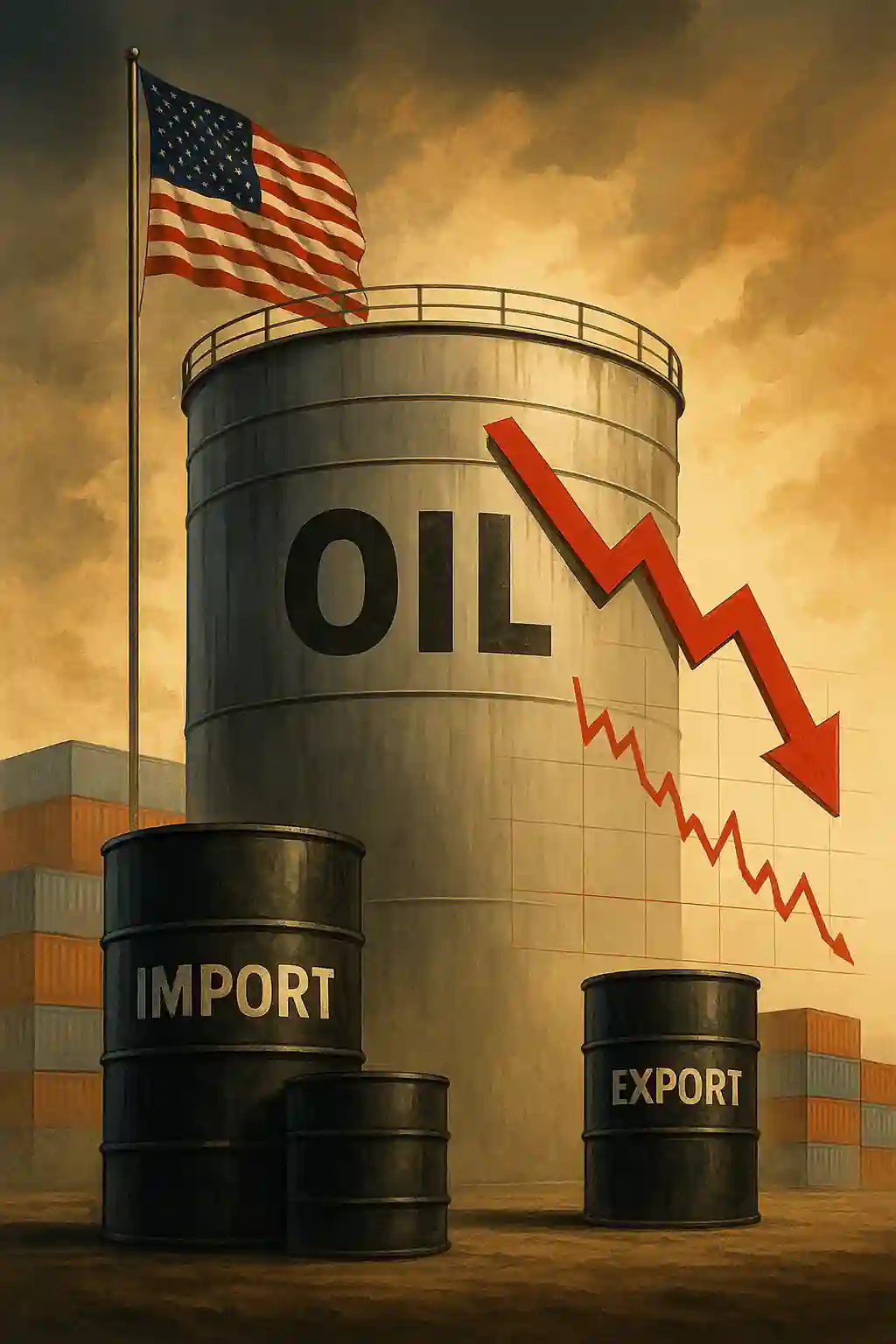U.S. Oil Inventories Climb Sharply Amid Market Shifts
Oil inventories in the United States rose significantly last week. The latest report from the U.S. Energy Information Administration (EIA) confirmed the increase. This surge in oil stockpiles was driven by a mix of rising domestic production, higher imports, and falling exports.
Higher Oil Output Drives Domestic Supply Gains
The U.S. oil industry saw a production boost last week. Domestic oil output rose to one of its highest levels in recent months. This uptick reflects continued resilience among shale producers. High prices earlier in the year helped encourage drilling activity.
Increased Oil Imports Add to Inventory Build
Imports of oil also climbed. As foreign oil arrived at U.S. ports, it added to total domestic supply. This import surge contributes to the larger-than-expected inventory build, putting downward pressure on oil prices in the short term.
Oil Exports Dip, Easing Global Outflow
Meanwhile, U.S. oil exports declined. This shift played a key role in the inventory jump. With less oil leaving the country, more barrels remained in domestic storage. Export weakness could be tied to softer international demand or logistical disruptions.
EIA Data Suggests Near-Term Pressure on Oil Prices
According to the EIA, the combination of increased production and reduced exports created a notable stockpile increase. Oil markets reacted cautiously to the data. Investors worry that oversupply could weigh on prices, especially if demand doesn’t rebound quickly.
Global Oil Market Awaits Next Supply Signals
Oil markets are now closely watching upcoming reports. Traders want more clarity on global supply and demand dynamics. Any future cuts from OPEC+ or recovery in Asian demand could quickly reverse the current oversupply narrative.
Inventory Builds Could Impact Refinery Strategy
Rising oil inventories may influence how U.S. refiners operate. With storage levels growing, some refiners may delay new crude purchases. That could create additional short-term softness in oil demand and delay the drawdown of excess barrels.
Seasonal Trends May Limit Oil Demand
As summer travel winds down, seasonal demand for oil typically declines. This factor could make it harder for the market to absorb elevated supply. Analysts expect stockpiles to remain above average unless exports rebound sharply or refinery activity picks up.
Oil Market Outlook Remains Cautiously Bearish
Oil prices may face headwinds in the weeks ahead. Rising inventories, slower export flows, and moderate demand all create bearish pressure. However, any geopolitical shock or supply cut could tighten the market again. For now, oil traders remain cautious.




